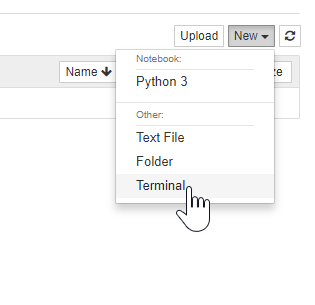

Other package managers exist (including platform-specific tools like yum, apt, homebrew, etc., as well as cross-platform tools like enstaller), but I'm less familiar with them and won't be remarking on them further.įor many users, the choice between pip and conda can be a confusing one. This post will focus on two approaches to installing Python packages: pip and conda. Third, I'll talk about some ideas the community might consider to help smooth-over these issues, including some changes that the Jupyter, Pip, and Conda developers might consider to ease the cognitive load on users. Second, I'll dive into some of the background of exactly what the Jupyter notebook abstraction is doing, how it interacts with the complexities of the operating system, and how you can think about where the "leaks" are, and thus better understand what's happening when things stop working. In the wake of several discussions on this topic with colleagues, some online ( exhibit A, exhibit B) and some off, I decided to treat this issue in depth here.įirst, I'll provide a quick, bare-bones answer to the general question, how can I install a Python package so it works with my jupyter notebook, using pip and/or conda?. In other words, the Jupyter notebook, like all abstractions, is leaky. In the simplest contexts this issue does not arise, but when it does, debugging the problem requires knowledge of the intricacies of the operating system, the intricacies of Python package installation, and the intricacies of Jupyter itself. etc.).įundamentally the problem is usually rooted in the fact that the Jupyter kernels are disconnected from Jupyter's shell in other words, the installer points to a different Python version than is being used in the notebook. this, that, here, there, another, this one, that one, and this. This issue is a perrennial source of StackOverflow questions (e.g. I installed package X and now I can't import it in the notebook. I most often see this manifest itself with the following issue: Select the package and click on it to begin the installation.In software, it's said that all abstractions are leaky, and this is true for the Jupyter notebook as it is for any other software.In the Anaconda Prompt or terminal, enter:.Launch Anaconda Navigator via the Start Menu or click on the Anaconda Navigator Desktop app.If you prefer to take a GUI approach, you can use Anaconda Navigator to install packages by doing the following: To install a package with Conda, open an Anaconda Prompt or terminal (depending on the operating system) and enter: conda install Installing Python Packages with Anaconda Navigator While you could use the GUI-based Navigator, it’s often quicker and easier to use the Conda command-line tool that is included as part of your Anaconda distribution. The Conda package manager is the most commonly used way to install and manage packages in a conda environment.
Conda install package python3 update#
The most common method of ensuring that both Anaconda and Conda are up-to-date is to open an Anaconda Prompt or terminal (depending on the operating system) and enter: conda update conda -all conda update anaconda Installing Python Packages with Conda Package Installation on Anaconda – Requirementsīefore any Python packages should be installed, ensure that the latest versions of Conda and Anaconda are present. Pip will work in any environment where Python is installed, including Anaconda and Conda environments, but it cannot install Conda Python packages.To avoid dependency conflicts, pip uses tools such as virtualenv and venv to create isolated environments. Pip installs all package dependencies, regardless of whether they conflict with other packages already installed.Conda will work with any version of Python, however it is limited to Anaconda and Conda environments.


If there is conflict, Conda will let the user know that the installation cannot be completed.
Conda install package python3 how to#
Conda analyzes the package for compatible dependencies and how to install them without conflict.Note that Conda and Pip handle dependencies differently: Navigator is the desktop graphical user interface (GUI) for managing packages, and Conda is the command line equivalent. If you work with Anaconda Python, you’re probably already familiar with the fact that Conda and Anaconda Navigator are package managers that can be used to add packages to your Anaconda/Conda environments.


 0 kommentar(er)
0 kommentar(er)
